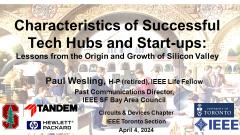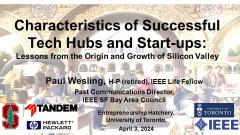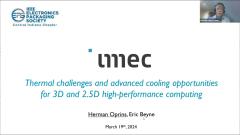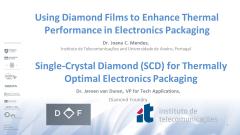Design Rules and Acceleration for Electromigration-Induced Failure: Coupled Modeling and Experimental Verification
(43:54 + Q&A) Prof. Xuejun Fan, Lamar University
-- electrical current, design rules, molecular dynamics simulation, key parameters, multi-physics model, thermomigration ...
As demand for high-performance semiconductors increases, heterogeneous integration using a combination of 3D monolithic and 2.5D/3D advanced packaging technology can boost the system performance significantly. Consequently, electromigation (EM)-induced failure in micro-bumps and redistribution lines (RDL) has become a great concern. In addition, as electrical current is eventually merged into substrates, thermomigration (TM) due to Joule heating, combined with EM, is one of the potential risks in substrates. In this presentation, I will present some general guidelines about design rules and accelerated tests for electromigration (EM)-induced failure, based on fully coupled modeling. For years, the existing EM theories have succeeded only in partially predicting or explaining complicated phenomena in experiments. Recently, we sorted out many incorrect models and assumptions under the framework of the coupling theory. In addition, taking multi-scale effects into consideration, we used molecular dynamics simulation to determine the key microscopic parameters, thus establishing a complete and self-consistent multi-physics coupling model of electromigration. We further conducted extensive EM tests and collected consistent test data for the purpose of model verification. The theoretical and numerical results fully reproduced the various phenomena in the experiments, including the impact of thermomigration. We then used the validated theory to provide new insights into design rules and acceleration factors to prevent EM-induced failure.
Bio: Xuejun Fan is a Regents’ Professor of Texas State University System, and an Endowed Professor at Lamar University, Beaumont, Texas. Dr. Fan is an IEEE Fellow, and an IEEE Distinguished Lecturer. He received the Outstanding Sustained Technical Contribution Award in 2017, and the Exceptional Technical Achievement Award in 2011 from Electronic Packaging Society of IEEE. Dr. Fan is a co-chair of Modeling and Simulation in Heterogeneous Integration Roadmap committee.
To access past videos, and to see what technical topics are scheduled, please visit our website and join our IEEE ListServ Dlist: www.ieee.org/scveps
(43:54 + Q&A) Prof. Xuejun Fan, Lamar University
-- electrical current, design rules, molecular dynamics simulation, key parameters, multi-physics model, thermomigration ...
As demand for high-performance semiconductors increases, heterogeneous integration using a combination of 3D monolithic and 2.5D/3D advanced packaging technology can boost the system performance significantly. Consequently, electromigation (EM)-induced failure in micro-bumps and redistribution lines (RDL) has become a great concern. In addition, as electrical current is eventually merged into substrates, thermomigration (TM) due to Joule heating, combined with EM, is one of the potential risks in substrates. In this presentation, I will present some general guidelines about design rules and accelerated tests for electromigration (EM)-induced failure, based on fully coupled modeling. For years, the existing EM theories have succeeded only in partially predicting ....
 Cart
Cart Create Account
Create Account Sign In
Sign In






